E-bikes and safety
What percentage of all accidents with e-bikes are so-called self-accidents, i.e. those without the involvement of other road users?
The competition has ended.

As an e-bike rider, there are a lot of mistakes you can make – even as an experienced cyclist. Here’s what I learned during an e-bike course with an accident prevention specialist from the Zug cantonal Police.
Remo Zemp knows what to expect pretty well. The participants in the safety course for e-bike riders, on the other hand, are excited to find out what’s coming their way. Just under a dozen men and women registered for the course, which was organised jointly by Pro Senectute in the canton of Zug, the Zug Police and TCS Zug. The goal of the event? To learn how to e-bike safely on the road. The dominant hair colour is grey, the standard outfit a quilted down jacket. The participants are a mix of people who like to e-bike as a hobby, take it on tours through nature or use it to run errands in the city.
A participation fee of 50 francs was levied for the course, which spanned two mornings. I was one of the participants – on working time (hey, someone’s gotta do the research!) and Galaxus’s dime.
Day one is dedicated to the basics. It’s a cold Tuesday morning in April. Out on the concrete square in front of the EV Zug ice hockey arena, the wind is whistling through everyone’s clothes. The police are already there when the participants roll up. Remo Zemp, head of the prevention unit at the Zug Police, has already set up colourful little pylons to mark different courses we’ll be doing later.
But before we saddle up, we go over some theory. Zemp is well aware of the deficits that new e-bike riders in particular have and he really rubs it in – but in a good way. His easy-going, humorous manner goes down well with the group of people who are eager to learn. The very first thing we do is say goodbye to the «monkey grip», that is, gripping the handlebars with your thumb and all four fingers. As Zemp explains, anyone who rides like this loses valuable time in the event of danger before braking. For this reason, you should always keep one or two fingers on the brakes.
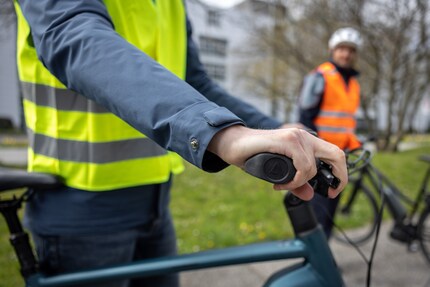
According to Zemp, a single finger is strong enough to press down on the brakes, as e-bikes are typically equipped with hydraulic disc brakes. It’s perfectly possible to do an emergency stop with just one finger on the front and one on the rear brake, as Zemp promptly demonstrates. He uses both brakes, not just the one on the rear wheel. But couldn’t the front wheel lock up as a result? To prevent that from happening, it’s important you press the front and rear brakes at the same time, not overdoing either. Zemp calls this «braking with feeling». Proper braking is a matter of practice, best learned in an area with no traffic.
When braking with an e-bike, you should know that higher speed and a higher total weight significantly increase the braking distance. For example, someone travelling at 25 km/h has a stopping distance of almost 19 metres (link in German). That’s nearly twice as long as a non-e-bike travelling at 15 km/h. All this to say, e-bikes’ better brakes don’t make up for the higher speed.
But you’ve got to be moving to brake. With that, the policeman sends our group onto the tracks he’d set up. Time to put the theory into practice. Everyone’s helmets fit properly; not too loose when nodding or shaking our heads vigorously and with two finger widths of space in the middle of our foreheads. Good stuff!
The obstacle course leads us straight, left, right and around the cones in a slalom. Luckily, no one was involuntarily de-saddled, and there were no collisions. Of course, the instructor still had tips for us. Some participants had positioned their saddle too high. As a result, they couldn’t remain seated with one foot on the ground when they stopped. According to Zemp, adjusting your seat down allows you to remain stable when standing and, above all, when coming to a stop. How so? Well, if you sit too high up, you run into the following problem: you have to simultaneously get off the saddle while braking and attempting to keep your balance, all while moving very slowly. Zemp is quick to help. He whips out an Allen key and adjusts our seats. Some of the group are less than thrilled, having preferred their higher and thus somewhat more comfortable seat height. But no one’s about to contradict a police officer. The motto is «safety first». As for me, my saddle height is just acceptable enough; I can reach the ground with the ball of my foot.
Then there’s the matter of engine assistance and selecting the right gear. Some of the driving exercises we do are faster, others more leisurely. Remo Zemp’s verdict? We’re not shifting gears enough to match this. E-bike riders tend to work less with the gears, he tells us, relying on the motor’s assistance instead. This can prove a problem when trying to drive off in a gear that’s too high. It makes keeping your balance harder. Add to that the fact that the motor assistance can suddenly kick in and give you an unexpected boost. Both result in an increased risk of falling. Long story short, downshift before stopping. In addition, it’s recommended to choose one level of motor assistance before each ride and to stick with it. Exceptions are foreseeable and longer inclines, where it’s worth switching to a higher level over a longer period of time.
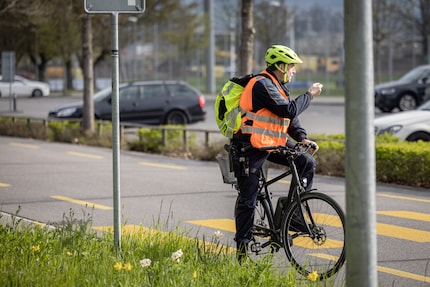
Day two also starts off with theory before we’re allowed out into the wild, i.e. onto the road. After all, that’s where accidents happen. Here’s a little pop quiz:
What percentage of all accidents with e-bikes are so-called self-accidents, i.e. those without the involvement of other road users?
The competition has ended.
According to the Swiss Council for Accident Prevention (BFU) (link in German), well over half of all accidents with people on an e-bike involve only the rider themselves. So, if you answered «55 per cent», you were right.
Most often, accidents happen while going in a straight line. If you ask those who’ve had accidents, 31 per cent cite slipping as the reason, 18 per cent cite going over an obstacle and 13 per cent cite train or railroad tracks. The police looks at different categories for accidents, with the two main causes being inattention/distraction and alcohol.
When it comes to collisions with other road users, there’s one major source of danger: roundabouts. Four out of ten accidents happen there, and the e-biker is primarily to blame in only four per cent of all cases. So, it comes as no surprise that Zemp has our group cycle through roundabouts so many times on the second day that you’d get dizzy watching us.
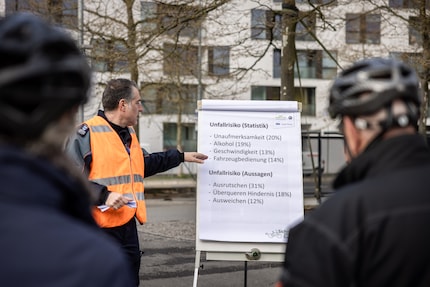
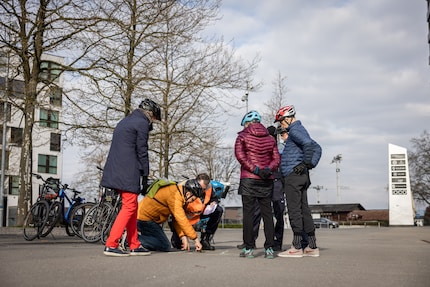
Roundabouts are very fashionable in modern-day road construction. Since the early 1990s, they’ve increasingly been replacing classic intersections. This means that anyone starting to ride an e-bike at an older age today is faced with something they weren’t exposed to in their youth, Zemp explains. That's why he recaps the rules:
Prefer to see this in a video? Here you go (video in German):
In principle, Zemp recommends a defensive riding style coupled with clear signals to motorists, and ideally even brief eye contact with anyone wanting to enter the roundabout. Many drivers aren’t attentive enough in roundabouts; they have only the exit in view and forget to signal. According to Zemo, the best way to protect yourself as an e-biker is to think for others and be aware of the dangers.
An e-bike is not a bicycle. It’s important to master the e-bike, to know the traffic rules, to make yourself clearly visible by wearing appropriate clothing and to use signals to make your intentions clear to others.
There’s at least one thing I learned from two days of training that I immediately implemented. Namely, when turning, I now always stretch out my arm in a very clear way. The last time I’d done that in such an exemplary manner was probably during my elementary school bicycle test. And there’s the fact that even when something makes sense in theory, we all tend to get sloppy over time. Over the duration of this e-bike course, I, a self-proclaimed good e-biker, was made aware of some bad habits that I can now break. You’re never too young for a lesson like that.
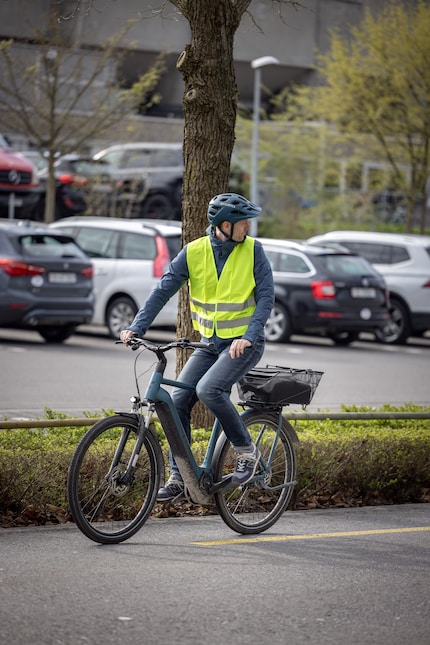
Courses for e-bike riders are offered by various organisations in Switzerland. TCS, the police and Pro Senectute in Zug offer the course I was at in May, June and August. For more information about it, click here and search for «e-bike». For information about courses in your region, see the TCS website. Courses are also available from private providers. Here’s a link to the relevant Google search. Please note that the courses listed above may not be available in English.
Journalist since 1997. Stopovers in Franconia (or the Franken region), Lake Constance, Obwalden, Nidwalden and Zurich. Father since 2014. Expert in editorial organisation and motivation. Focus on sustainability, home office tools, beautiful things for the home, creative toys and sports equipment.
Interesting facts about products, behind-the-scenes looks at manufacturers and deep-dives on interesting people.
Show all